What to Wear to the Shooting Range – An Unofficial Dress Code
March 21st, 2020
6 minute read
If you are new to shooting, you may not realize that there are certain kinds of clothing that is appropriate for training, while other attire that is inappropriate for the shooting range. I’ve seen quite a few students arrive at firearms training classes wearing the correct clothing for a day on the range.
To my amazement, every once in a while, a few people show up not quite dressed for the occasion. Perhaps they never got the memo or maybe they just didn’t know any better.

To prevent others from becoming “That Girl”, I’m sharing a list of “What NOT to Wear on the Shooting Range.” Then we will cover some of the things you should consider wearing to the range. Note: All images have been recreated to protect the not so innocent.
What NOT to Wear on the Shooting Range
There are all kinds of attire that a man or woman should not wear to the shooting range. Let’s go over a few of the clothing items that I think you should avoid.
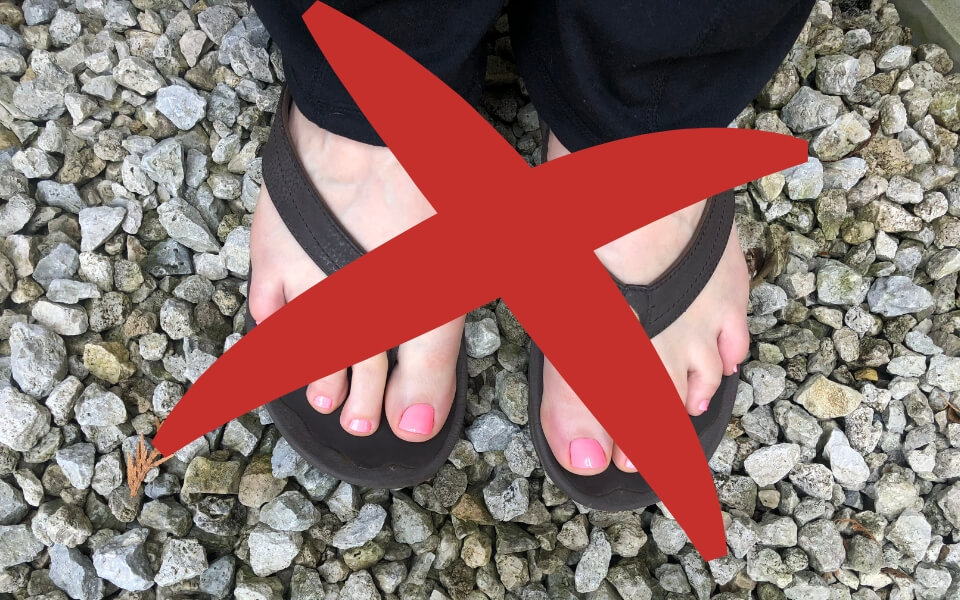
Flip-Flops, Sandals and Peep-Toe Shoes
There’s a time and a place for flip flops, but the shooting range certainly isn’t one of them. You should also avoid sandals and open-toed – or peep toe – shoes.
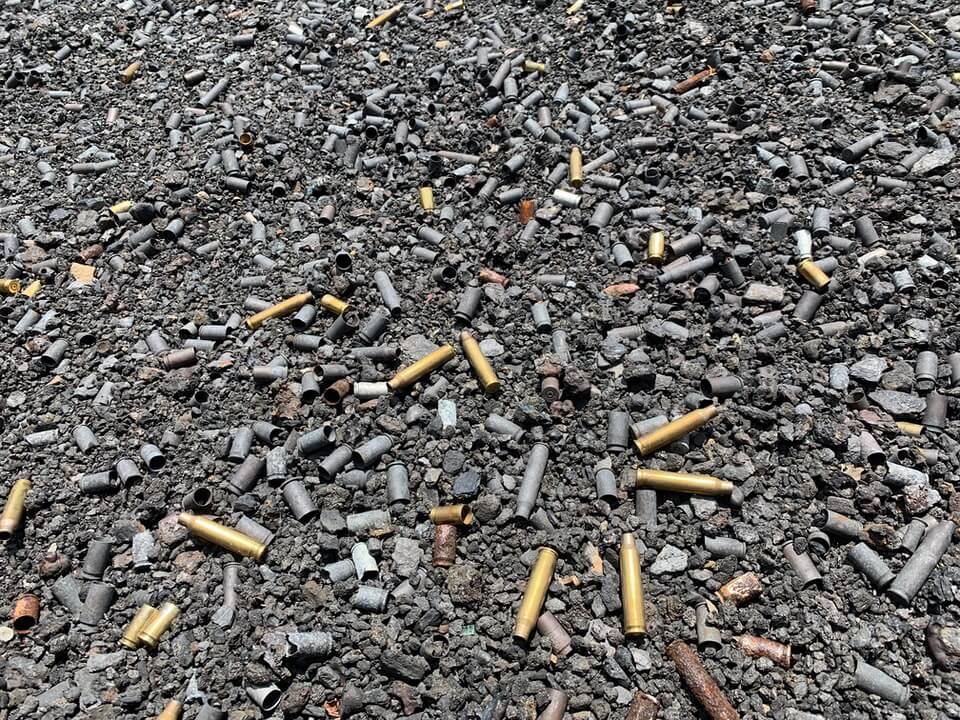
On many outdoor ranges you may find cinders, red ants, spent ammo casings and a lot of lead. When actively shooting, hot brass may land (and often stick) to your foot, cinders can lodge under your toes and need I say anymore about the lead?
Closed-toed shoes are the way to go.
High Heels and Unstable Shoes
High heel shoes are a great fashion item, but they have no practical use on the range. When training, we emphasize safety. That includes having a stable platform for your shooting.
No doubt that there are women who can move well with heels, the reality is heels do not offer the same level of stability that sneakers or boots do.
Shorts
When it’s hot I wear shorts on the range, but not when shooting steel or during dynamic shooting. Ricochets or splash-back happen more than many people realize. Plus it’s easy to slip on casings left on the range floor and it hurt like the dickens when you kneel on them. Long pants help with all of these situations.
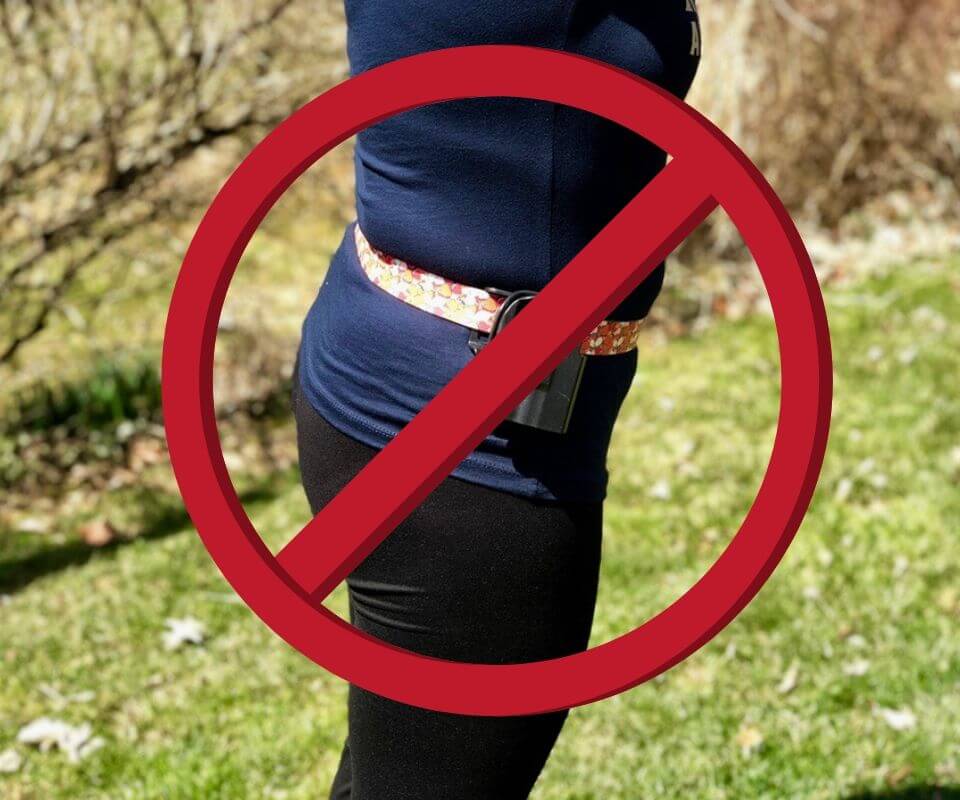
A better choice is long pants on a range when dynamic shooting or steel is involved. Which brings us to the next concern – pants without belt loops.
Pants without Belt Loops
Simply put, belts are held in place by belt loops – this includes gun belts that your holster anchors to. Cinching a belt over top a sweatshirt or loosely slung on yoga pants it not conducive to successful firearms training. The belt needs to stay in place so the holster is always where it needs to be. You shouldn’t have to hold your belt down on your hips while you try to draw your pistol. Find pants with belt loops that are strong and wide enough for the belt to fit through.
Fashionable or Dress Style Belts
I’ve seen a lot of braided or fashion belts that don’t have the strength to keep the holster up on the waist and in place. During a full day of firearms training there will be numerous draws from the holster. A sturdy gun belt, made specifically for use with a holster is a much better choice.
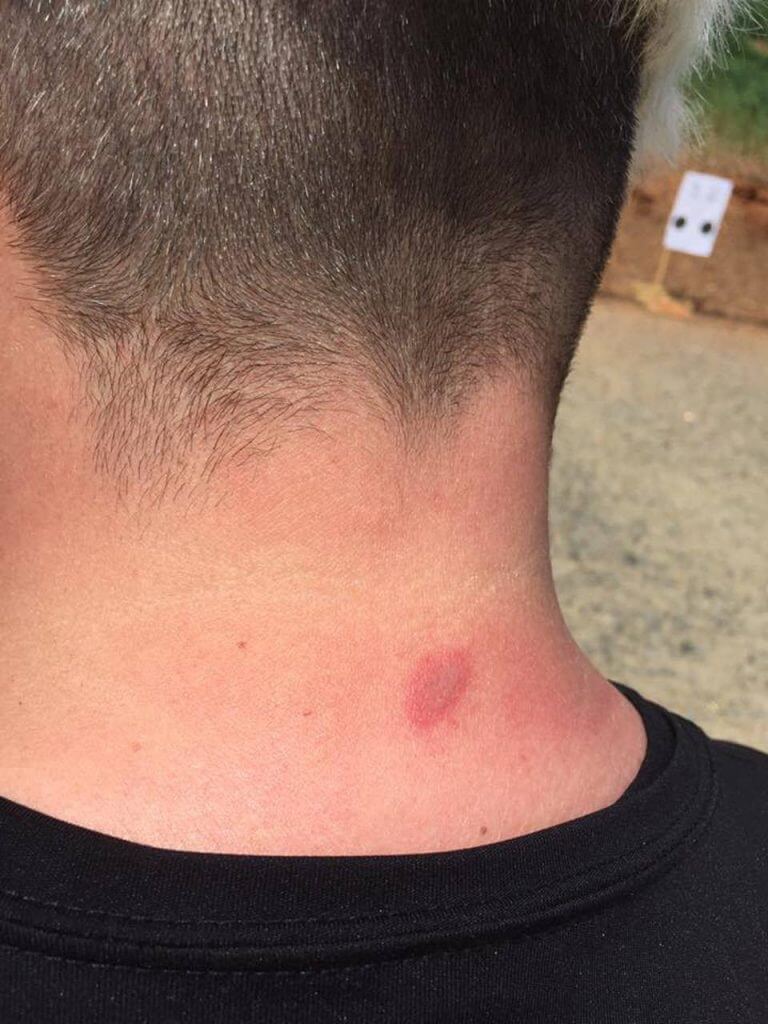
Low-cut and V-neck Shirts
Ladies should avoid v-neck shirts. Hot brass, either from the one’s own gun or a neighbor on the shooting line, inevitably finds the v-neck funnel. Aside from the fact it will leave a pretty good mark, it also leads into the “hot brass dance.” Yep, imagine someone jumping around, often with flailing arms and waving a loaded firearm trying to get the hot brass off her skin. If it’s a button down shirt, keep it buttoned up. A better choice is a higher neck shirt or even a neck gaiter to keep the hot brass out.
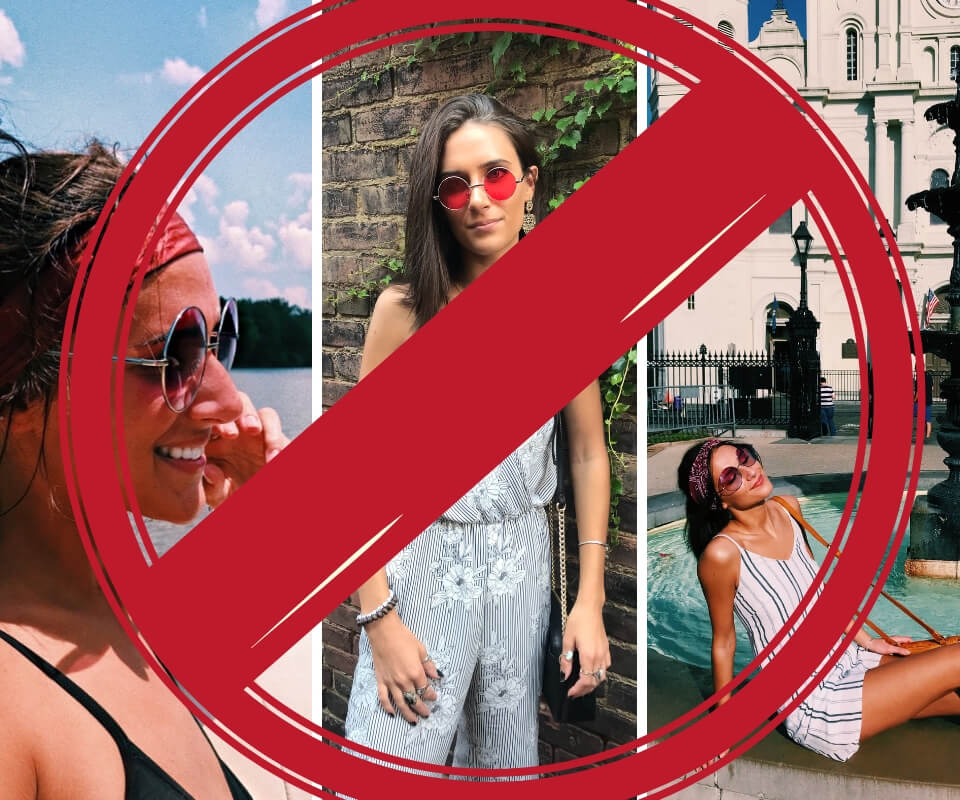
Stylish Sunglasses
Everyone knows eye protection is mandatory on a range. However, some students don’t realize the importance of wearing glasses specific to shooting. Those fashionable sunglasses worn at the beach aren’t designed to stop high velocity objects flying toward your eyes.
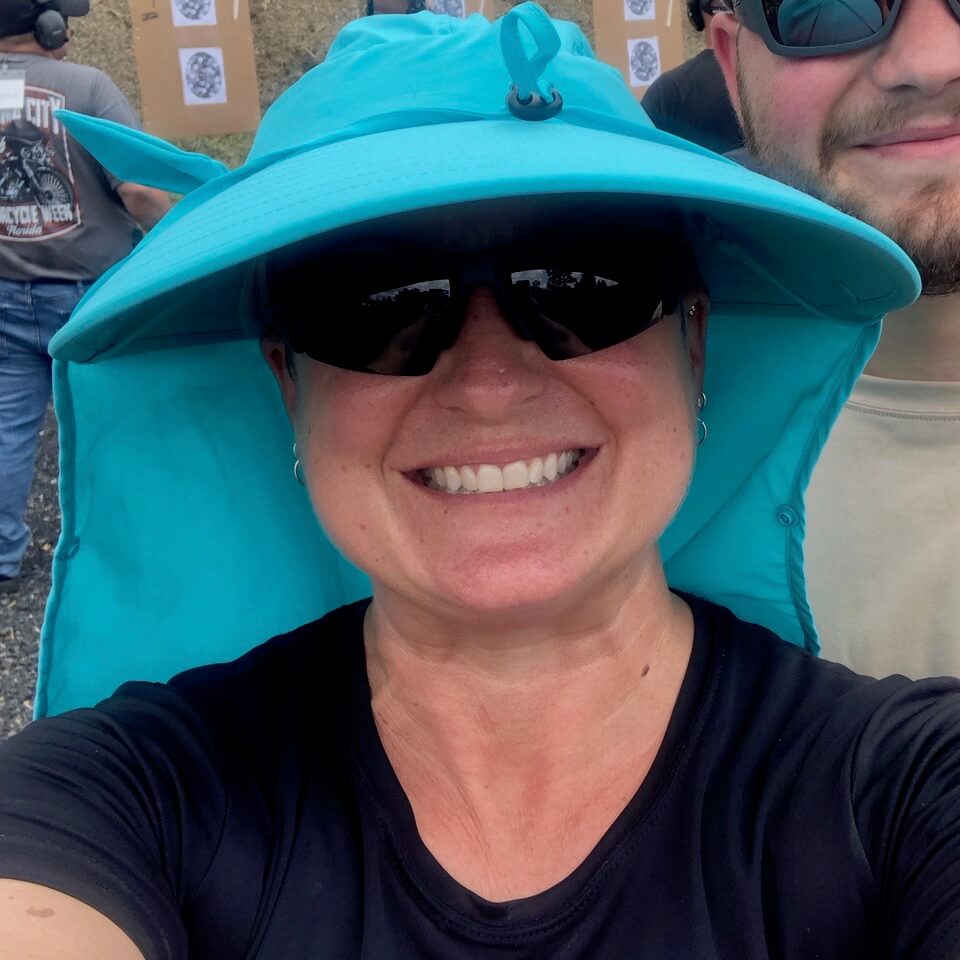
I’m not saying students have to be tacti-cool or even tactical when attending firearms training classes. Heck, I often wear my extra-wide brimmed teal hat and even a pink scarf to keep the sun off my face. Hopefully this gave you a little giggle and you didn’t recognize yourself as one of the offenders. However, if you did, perhaps you need to add some wardrobe pieces before you next trip to the shooting range.
What to Wear for Defensive Shooting Training at the Range
When I’m getting ready for training on a shooting range, especially for defensive shooting, I always make sure to wear clothing that ensures safety, comfort, and practicality. Here’s a detailed rundown of what I consider the best attire for this purpose.
Headgear
To start with, I always wear a brimmed hat or cap. This headgear is particularly useful for protecting my face and eyes from the sun when I’m training outdoors. Additionally, it helps prevent hot brass from landing directly on my forehead or neck, which can be quite uncomfortable and distracting.
Eye Protection
Next on my list is a pair of safety glasses. I make sure they are rated for impact resistance (ANSI Z87.1 or better). These glasses are crucial because they protect my eyes from debris and ejected brass casings, which are common on a shooting range.
Hearing Protection
Hearing protection is another must-have. I switch between earmuffs and earplugs, depending on the situation. High-quality hearing protection is essential to prevent hearing damage from gunfire. I find electronic earmuffs particularly useful because they amplify low-level sounds while blocking harmful noise levels, making communication easier.
Upper Body Clothing
For my upper body, I always opt for high-collared shirts. A high collar is great for helping to prevent hot brass casings from falling inside my shirt. Long-sleeved shirts offer additional protection for my arms, shielding them from potential burns and scratches. I prefer shirts made from durable and breathable fabrics like cotton, polyester blends, or tactical materials. These materials offer some resistance to wear and tear, making them ideal for shooting activities.
Dressing in layers is another strategy I use, especially when the weather is variable. This allows me to maintain comfort by adding or removing layers as needed.
Lower Body Clothing
When it comes to my lower body, I always choose long pants made from sturdy materials like denim or tactical fabrics. These pants protect my legs and provide better resistance against environmental elements and rough ground conditions. A strong, stiff belt designed to carry a holster is also indispensable. It has to be robust enough to support the weight of my firearm and any additional gear.
Footwear
For footwear, I always go with closed-toe shoes or boots. Athletic shoes or tactical boots offer excellent support, protection, and comfort. The non-slip soles are particularly important for maintaining stability on different surfaces.
Avoid Jewelry
I make it a point to leave rings, fancy watches, bracelets and long necklaces at home. These can get in the way or become entangled, posing safety risks and distractions.
In summary, appropriate clothing for a shooting range involves prioritizing safety, comfort, and practicality. By dressing in a way that supports my activities and protects my body, I can focus on my training effectively and, most importantly, safely.
Editor’s Note: The piece was shared with is by the Women’s Outdoor Network. Since that time, the article has been updated to offer additional information. Also, please be sure to check out The Armory Life Forum, where you can comment about our daily articles, as well as just talk guns and gear. Click the “Go To Forum Thread” link below to jump in!
Join the Discussion
Continue Reading
Did you enjoy this article?

 83
83






